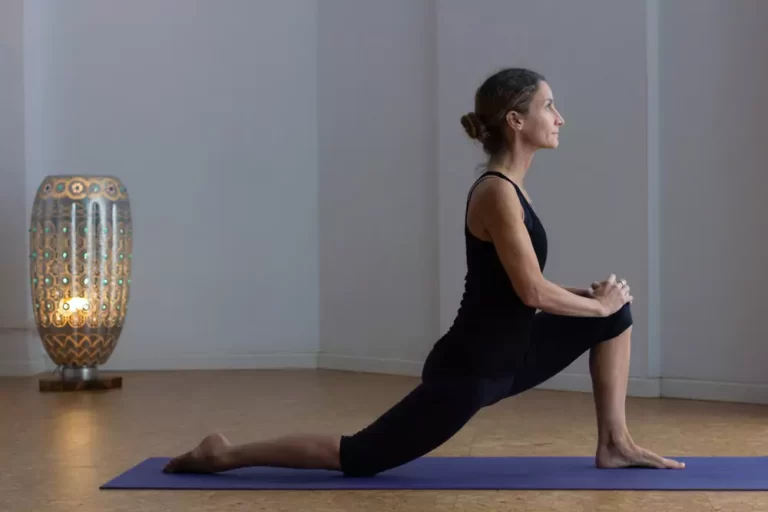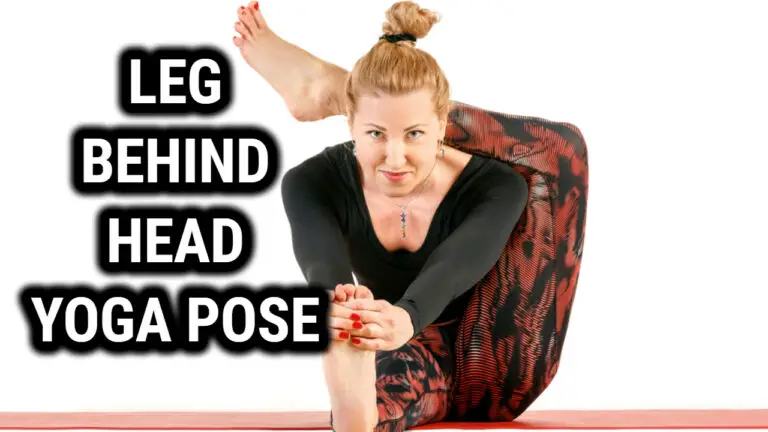Spiritual Yoga for Beginners: Way To Find Inner Peace

Are you looking for a way to find inner peace and balance in your life? Look no further than spiritual yoga. This ancient practice combines physical movement, breathing exercises, and meditation to help connect the mind, body, and soul. In this article, we will explore the basics of spiritual yoga and provide tips for beginners on how to get started.
Understanding the Basics of Spiritual Yoga
Definition of Yoga
Yoga originated in ancient India and has been practiced for over 5,000 years. The word “yoga” comes from the Sanskrit word “yuj,” which means to unite or join. The practice of yoga involves physical movement, breathing techniques, and meditation to help connect the mind, body, and soul.
Different Paths of Yoga
There are four main paths of yoga: Karma, Bhakti, Jnana, and Raja. Each path emphasizes a different approach to achieving spiritual enlightenment.
- Karma yoga emphasizes selfless action and service to others.
- Bhakti yoga emphasizes devotion and love for a higher power.
- Jnana yoga emphasizes self-inquiry and the pursuit of knowledge.
- Raja yoga emphasizes the control of the mind through meditation and breathing techniques.
Importance of Incorporating Spirituality into Yoga Practice
While yoga can be practiced solely as a physical exercise, incorporating spirituality into the practice can deepen the experience and provide a sense of inner peace and balance. By connecting the mind, body, and soul, spiritual yoga helps practitioners find a sense of purpose and meaning in their lives.
Preparing for Spiritual Yoga Practice
Before starting a spiritual yoga practice, it is important to create a sacred space and choose the right time and attire. Additionally, practicing breathing techniques (Pranayama) can help calm the mind and prepare the body for the physical practice.
Creating a Sacred Space
Creating a sacred space can help set the tone for your practice and provide a sense of peace and calm. This space can be as simple as a corner of your room with a yoga mat and a candle or can be more elaborate with spiritual decorations and artwork.
Choosing the Right Time for Practice
Choosing the right time for practice is essential to developing a consistent routine. Consider practicing in the morning to start your day off on a positive note or in the evening to wind down before bedtime.
Choosing the Right Attire
Choosing the right attire can help you feel comfortable and confident during your practice. Opt for comfortable, breathable clothing that allows for ease of movement.
Breathing Techniques (Pranayama)
Practicing breathing techniques can help calm the mind and prepare the body for the physical practice. Some popular pranayama techniques include:
- Ujjayi breath: A deep, oceanic breath that helps calm the mind and regulate the body’s temperature.
- Kapalbhati breath: A powerful breath that helps increase oxygen flow to the brain and energize the body.
- Nadi Shodhana breath: Also known as alternate nostril breathing, this technique helps balance the right and left sides of the brain and promote relaxation.
Spiritual Yoga Poses for Beginners
Incorporating yoga poses (asanas) into your spiritual practice can help improve physical strength and flexibility while also promoting mindfulness and inner peace. Here are five beginner-friendly poses to try:
1. Mountain Pose (Tadasana)
- Stand with your feet hip-width apart.
- Ground down through your feet and engage your leg muscles.
- Roll your shoulders back and down, lifting through the crown of your head.
- Breathe deeply and hold for 5-10 breaths.
2. Downward Facing Dog Pose (Adho Mukha Svanasana)
- Begin on your hands and knees.
- Place your hands shoulder-width apart and your feet hip-width apart.
- Lift your hips up and back, straightening your arms and legs.
- Ground down through your hands and feet and breathe deeply for 5-10 breaths.
3. Warrior II Pose (Virabhadrasana II)
- Begin in Mountain Pose.
- Step your left foot back, keeping your feet hip-width apart.
- Turn your left foot out to a 90-degree angle and bend your right knee.
- Raise your arms to shoulder height and gaze over your right fingertips.
- Breathe deeply and hold for 5-10 breaths before switching sides.
4. Tree Pose (Vrksasana)
- Begin in Mountain Pose.
- Shift your weight onto your left foot and bring your right foot to rest on your left thigh.
- Place your hands in prayer position at your heart.
- Breathe deeply and hold for 5-10 breaths before switching sides.
5. Child’s Pose (Balasana)
- Begin on your hands and knees.
- Lower your hips back toward your heels and stretch your arms forward.
- Rest your forehead on the ground and breathe deeply for 5-10 breaths.
Incorporating Meditation into Your Practice
Meditation is an important aspect of spiritual yoga, as it helps calm the mind and cultivate a sense of inner peace. Here are some tips for incorporating meditation into your practice:
- Choose a quiet space free from distractions.
- Sit in a comfortable position, either on the ground with crossed legs or in a chair.
- Close your eyes and focus on your breath, counting each inhale and exhale.
- When thoughts or distractions arise, gently acknowledge them and bring your focus back to your breath.
Tips for a Successful Spiritual Yoga Practice
Incorporating spirituality into your yoga practice can be challenging, especially for beginners. Here are some tips for success:
- Be patient and consistent with your practice. Spiritual growth takes time and effort.
- Focus on your intention and purpose for practicing spiritual yoga.
- Embrace the journey and don’t get discouraged by setbacks or challenges.
- Seek guidance and support from a spiritual teacher or community.
Spiritual Laws Of Yoga
Yoga is not just a physical practice, but also a spiritual one. The ancient wisdom of yoga teaches us that there are certain spiritual laws that govern our lives and guide us towards greater awareness, inner peace, and enlightenment. In this article, we will explore the seven spiritual laws of yoga and how you can incorporate them into your practice and daily life.
1. Law of Unity
The first law of yoga is the Law of Unity, which teaches us that everything in the universe is interconnected and one. This law reminds us that we are not separate from the world around us, but rather a part of it. By embracing this law, we can cultivate a sense of oneness and connection with all beings, leading to greater empathy, compassion, and love.
2. Law of Karma
The Law of Karma is the principle of cause and effect. This law teaches us that every action we take has consequences, either positive or negative. By understanding and embracing this law, we can become more mindful of our thoughts, words, and actions, and strive to create positive change in our lives and the world around us.
3. Law of Dharma
The Law of Dharma is the principle of purpose and meaning. This law teaches us that we all have a unique purpose in life and that we must discover and fulfill it in order to find true happiness and fulfillment. By embracing this law, we can gain clarity about our life’s purpose and use our talents and passions to contribute to the world in a meaningful way.
4. Law of Detachment
The Law of Detachment teaches us to let go of attachment and surrender to the present moment. This law reminds us that attachment to material possessions, people, and outcomes can lead to suffering and that true happiness and freedom come from letting go and embracing the present moment.
5. Law of Intention and Desire
The Law of Intention and Desire teaches us that our intentions and desires have the power to manifest our reality. By setting clear intentions and aligning our desires with our highest self, we can create positive change in our lives and the world around us.
6. Law of Self-Awareness
The Law of Self-Awareness is the principle of self-reflection and introspection. This law teaches us to be mindful of our thoughts, emotions, and behaviors and to cultivate a deeper understanding of ourselves. By embracing this law, we can become more self-aware and make conscious choices that align with our true nature and highest potential.
7. Law of Surrender
The Law of Surrender is the principle of letting go and trusting in the universe. This law teaches us to release our attachment to outcomes and surrender to the flow of life. By embracing this law, we can find greater peace and serenity in the face of uncertainty and change.
Incorporating these spiritual laws into your yoga practice and daily life can lead to greater awareness, inner peace, and fulfillment. By embracing unity, karma, dharma, detachment, intention and desire, self-awareness, and surrender, you can cultivate a deeper connection with yourself, others, and the universe. Use these spiritual laws as a guide for living a more conscious, purposeful, and fulfilling life.
Styles of Yoga For Spiritual Awareness
Yoga is a powerful tool for cultivating spiritual awareness and connecting with our higher selves. There are many different styles of yoga that can be used to enhance our spiritual practice and deepen our connection to the divine. In this article, we will explore some of the most popular styles of yoga for spiritual awareness and how they can benefit your practice.
1. Hatha Yoga
Hatha yoga is the most widely practiced style of yoga in the Western world. It focuses on physical postures (asanas), breath control (pranayama), and meditation. Hatha yoga is a great way to develop strength, flexibility, and balance in the body, while also cultivating mindfulness and inner peace. It is a gentle and accessible style of yoga that is suitable for beginners and experienced practitioners alike.
2. Kundalini Yoga
Kundalini yoga is a dynamic and powerful style of yoga that combines physical postures, breath work, and chanting to awaken the Kundalini energy at the base of the spine. This style of yoga is designed to release blocked energy and increase spiritual awareness. Kundalini yoga can be intense, so it’s important to practice with a qualified teacher who can guide you safely.
3. Vinyasa Yoga
Vinyasa yoga is a flowing style of yoga that links movement with breath. It is a dynamic and energetic practice that focuses on building strength and stamina in the body, while also cultivating mindfulness and concentration. Vinyasa yoga can be a great way to connect with your breath and move into a meditative state.
4. Ashtanga Yoga
Ashtanga yoga is a traditional style of yoga that follows a set sequence of postures. It is a dynamic and rigorous practice that requires discipline and dedication. Ashtanga yoga is designed to build strength, flexibility, and endurance in the body, while also cultivating mental focus and inner peace. It is a great style of yoga for those who are looking for a challenging and transformative practice.
5. Yin Yoga
Yin yoga is a gentle and meditative style of yoga that focuses on long-held postures to stretch the connective tissues of the body. It is a passive practice that encourages surrender and relaxation. Yin yoga is a great way to cultivate mindfulness and connect with your inner self. It is also a wonderful complement to more dynamic styles of yoga.
6. Restorative Yoga
Restorative yoga is a gentle and relaxing style of yoga that uses props to support the body in restful postures. It is a nurturing and rejuvenating practice that is designed to calm the nervous system and promote deep relaxation. Restorative yoga is a great way to reduce stress and cultivate inner peace.
7. Jivamukti Yoga
Jivamukti yoga is a dynamic and creative style of yoga that integrates physical postures, breath work, meditation, and chanting. It is a holistic practice that is designed to connect the practitioner with their true nature and the divine. Jivamukti yoga is a great way to explore the deeper aspects of yoga and cultivate spiritual awareness.
Benefits of Spiritual Yoga
Spiritual yoga is a powerful practice that can provide a wide range of benefits for both the mind and body. Here are some of the top benefits of practicing spiritual yoga:
1. Increased spiritual awareness
One of the primary benefits of spiritual yoga is that it can help to deepen your connection to the divine and increase your overall spiritual awareness. Through the practice of meditation, pranayama (breath control), and other spiritual techniques, you can learn to access higher states of consciousness and experience a greater sense of connection with the universe.
2. Reduced stress and anxiety
Spiritual yoga can also be an effective tool for reducing stress and anxiety. By practicing mindful movement, breath work, and meditation, you can learn to cultivate a sense of inner calm and stillness, which can help to reduce the impact of stress and anxiety on your mind and body.
3. Improved physical health
In addition to its mental and spiritual benefits, spiritual yoga can also have a positive impact on your physical health. Many styles of yoga are designed to improve strength, flexibility, and balance, which can help to prevent injuries and improve overall physical functioning. Yoga can also be beneficial for those dealing with chronic pain, arthritis, and other physical ailments.
4. Enhanced emotional well-being
Practicing spiritual yoga can also help to improve your emotional well-being. Through the practice of mindfulness and self-reflection, you can learn to cultivate greater self-awareness and emotional intelligence. This can help to improve your relationships with others and enhance your overall sense of happiness and fulfillment.
5. Greater sense of purpose and meaning
Finally, practicing spiritual yoga can help to cultivate a greater sense of purpose and meaning in your life. By connecting with your higher self and accessing higher states of consciousness, you can gain a greater sense of perspective and clarity about your life path and purpose. This can help to increase your overall sense of fulfillment and purpose in life.
FAQ’s
Q: How do I start spiritual practice yoga?
A: To start a spiritual yoga practice, it’s important to first set your intentions and create a sacred space for your practice. This can involve setting up an altar or creating a dedicated space in your home for your practice. Next, you’ll want to find a style of yoga that resonates with you and begin practicing on a regular basis. It can also be helpful to incorporate meditation, pranayama, and other spiritual techniques into your practice to deepen your connection to the divine.
Q: What is the most spiritual form of yoga?
A: There are many different styles of yoga that can be considered spiritual, but some of the most commonly recognized spiritual practices include Kundalini yoga, Bhakti yoga, and Jivamukti yoga. These styles of yoga incorporate a wide range of spiritual techniques, including meditation, mantra, and pranayama, to help practitioners connect with their inner selves and the divine.
Q: How to connect yoga to spirituality?
A: To connect yoga to spirituality, it’s important to practice with intention and mindfulness. This can involve setting an intention for your practice, practicing pranayama and meditation, and incorporating spiritual techniques like mantra and visualization into your practice. You can also read spiritual texts, attend spiritual workshops or retreats, and seek guidance from a spiritual teacher or mentor to help deepen your connection to the divine.
Q: Which yoga is best for spiritual enlightenment?
A: The yoga path to spiritual enlightenment is a personal journey and will depend on your individual needs and preferences. However, some of the most popular styles of yoga for spiritual enlightenment include Kundalini yoga, Hatha yoga, and Raja yoga. These styles of yoga incorporate a wide range of spiritual techniques to help practitioners awaken their inner selves and connect with the divine.
Final Words
Spiritual yoga into your daily routine can help you find inner peace and balance in your life. By combining physical movement, breathing techniques, and meditation, spiritual yoga helps connect the mind, body, and soul. Use the tips and poses in this article to start your spiritual yoga practice today and cultivate a deeper sense of spirituality and purpose in your life.





